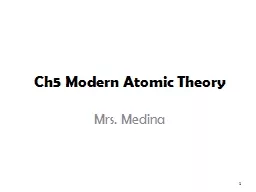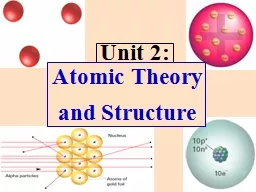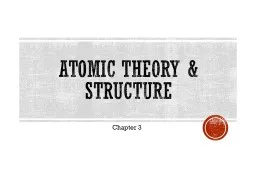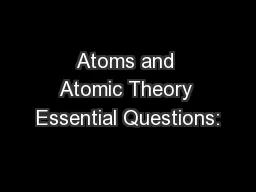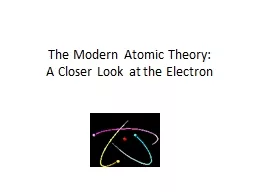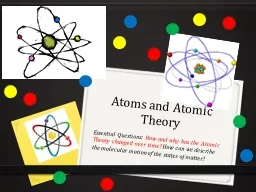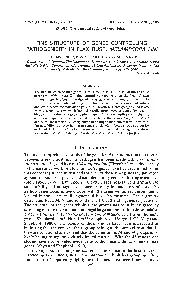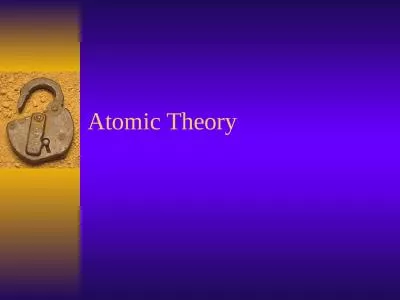PPT-Ch5 Modern Atomic Theory
Author : tawny-fly | Published Date : 2020-04-03
Mrs Medina 1 Why do metals glow when heated 2 Models of the Atom A model should explain not just what the material is made of composition but also how it is going
Presentation Embed Code
Download Presentation
Download Presentation The PPT/PDF document " Ch5 Modern Atomic Theory" is the property of its rightful owner. Permission is granted to download and print the materials on this website for personal, non-commercial use only, and to display it on your personal computer provided you do not modify the materials and that you retain all copyright notices contained in the materials. By downloading content from our website, you accept the terms of this agreement.
Ch5 Modern Atomic Theory: Transcript
Download Rules Of Document
" Ch5 Modern Atomic Theory"The content belongs to its owner. You may download and print it for personal use, without modification, and keep all copyright notices. By downloading, you agree to these terms.
Related Documents

